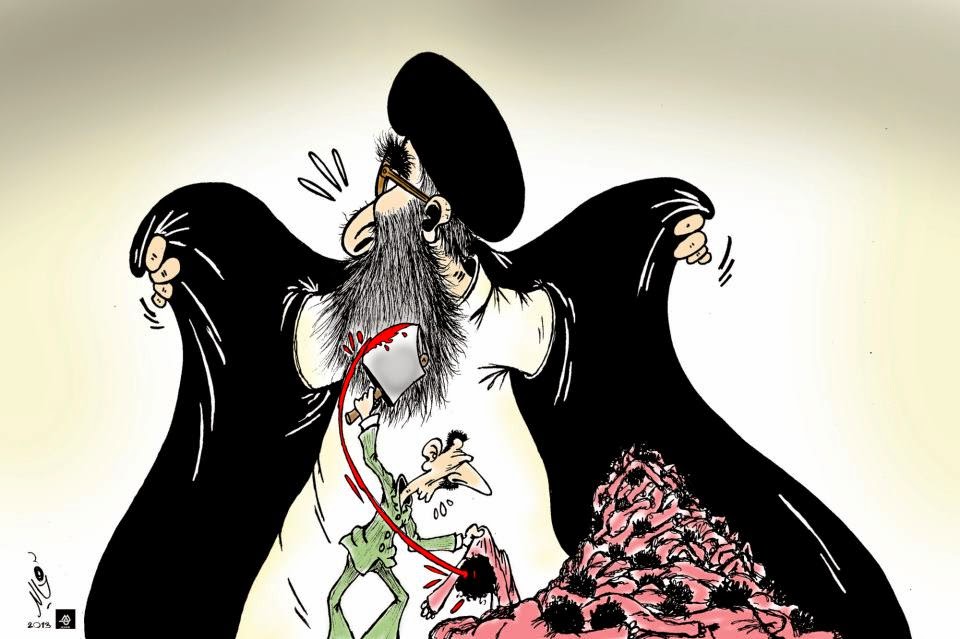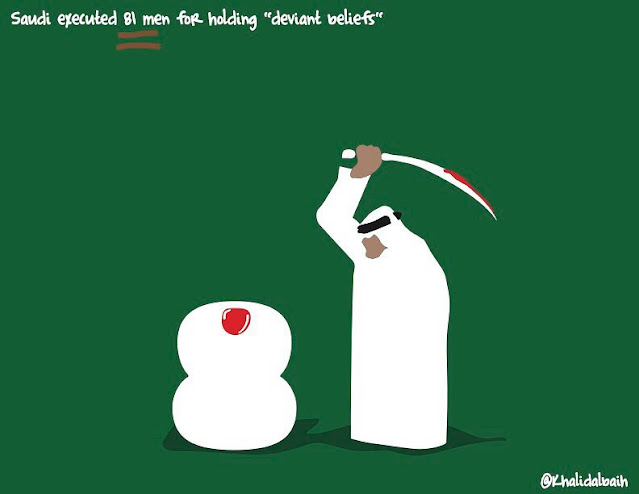"To the Warmongers"
"I am back again from hell
With loathsome thoughts to sell;
Secrets of death to tell;
And horrors from the abyss (…)
 |
| Mohammed Khaled. Photo: Kalb Balady, November 17, 2013. |
"(…) Young faces bleared with blood,
Sucked down into the mud,
You shall hear things like this,
Till the tormented slain
Crawl round and once again,
Moan out their brutish pain (…)"
 |
| Mohammed Khaled. Photo: Kalb Balady, November 17, 2013. |
The quoted lines above open the poem To the Warmongers by Siegfried Sassoon were written when he was wounded in hospital in 1917. A poem of a young man having seen too much to an extent that it becomes an existential question whether this is life? Is this what lies at the core of human life which we usually do our best to hide, or is this what should never be? Are these the eyes of someone who has seen the truth?
 |
| Mohammed Khaled, detail. Photo: Kalb Balady, November 17, 2013. |
To which there are no answers and yet the first answer lies right in front of us: The atrocities of World War I were manmade. Someone was culpable just as they are responsible in Egypt today, a new set of warmongers in military uniform, this time when meeting the protesters on the street with force.
The existential exclamation points a direct political finger on the responsibility. Above his eyes are staring and yet they are empty, and the emptiness is underlined by the rings of ink onto which a softer brush has posited a shadowy layer so that we are affronted by a shadow even before we seek his gaze. It is not healthy to look at him.
Mohammed Khaled has taken up the glove thrown by the poets and artists who knew the horrors of the First World War: How to get as close to the fact as possible.
 |
| Otto Dix, Verwundeter (Herbst 1916, Bapaume) / Wounded Soldier (Autumn 1916, Bapaume), 1924. Photo at www.wikipaintings.org. |
Mohammed Khaled as Otto Dix before him is laying out the story with the brush, the bodies are disintegrating, making them call out all the more forcefully:
 |
| Mohammed Khaled, detail. Photo: Kalb Balady, November 17, 2013. |
The line itself has sound, it is a roar. When I see the work of Mohammed Khaled, I cannot help thinking of the German voice coach, Alfred Wolfsohn. His techniques are still in use today and I for one was taught a couple of them when I voice-trained. Wolfsohn too worked on his experiences from the trenches of First World War, when he had heard human sounds beyond all boundaries. The young wounded screaming from No Man's Land, from where no one could get to them to save them. Noises that were violent in character, human voices that had lost all limitations.
Mohammed Khaled. Photo: Kalb Balady, November 22, 2013.
|
The canvases by Mohammed Khaled are all the more impressive by taking the graphic medium that we are confident with in the tiny format, meeting us in 1:1 on paper, onto the large scale. Mohammed says he would have used larger canvases, could they be had. But there is inspiration to be had in art history, where canvases have been sewn or glued together for many centuries. The massive work is then taken off its frame and rolled together when it is to be moved, such as Picasso's Guernica was when it was traveling in Scandinavia in 1938. Is it sadly time for the Guernica of this century?
Mohammed Khaled. Photo: Kalb Balady, November 22, 2013.
|
Of course nothing compares in the size to architectonic walls. Such as the presently dazzle painted wall of Mohamed Mahmoud Street, where the military insistence for the past 150 years on invisibility and colorlessness has been affronted. The first to initiate the dazzled surface was Mohammed Khaled. He chose to portrait two specific personalities who are one-eyed since the violence of January 25, 2011. Underneath we see the outline of one, who lost his life, whereas the blinded eye has turned into an exposing light more powerful than ever. It is a challenge: Look at the anger you have created:
 |
| Mohammed Khaled, "Eyes of Freedom". Photo: Kalb Balady, November 19, 2013. |
"(…) And the wounds in my heart are red,
For I have watched them die."
- the concluding lines of To the Warmongers by Siegfried Sassoon. All photos are courtesy of the artists and their photographers and must not be reproduced without their permission.



